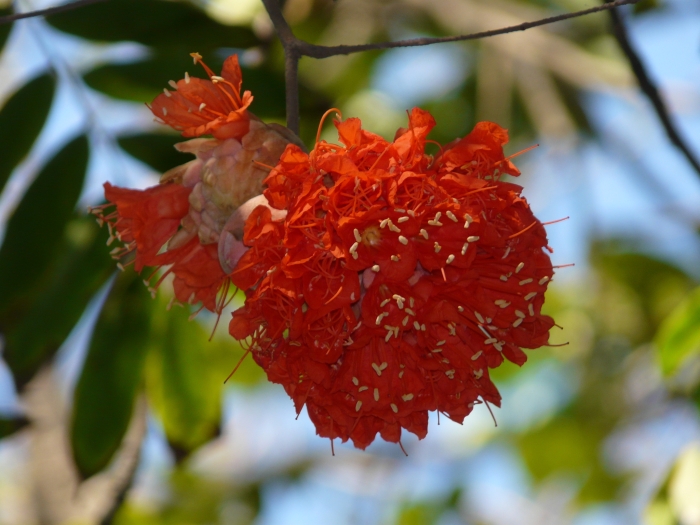Scarlet Flame Bean
(Brownea coccinea)
Scarlet Flame Bean (Brownea coccinea)
/
/

© Dinesh Valke
CC BY-SA 4.0
Image By:
© Dinesh Valke
Recorded By:
Copyright:
CC BY-SA 4.0
Copyright Notice:
Photo by: © Dinesh Valke | License Type: CC BY-SA 4.0 | License URL: http://creativecommons.org/licenses/by-sa/4.0/ | Uploader: dineshvalke | Publisher: iNaturalist |

























Estimated Native Range
Summary
Brownea coccinea, commonly known as Scarlet Flame Bean, Mountain Rose, Rose of Venezuela, and Cooper Hoop, is an evergreen tree native to the rainforests of Colombia, Ecuador, and Venezuela. It is a small to mid-sized species, typically reaching about 12 feet in height. The tree is characterized by its pinnate compound leaves and clusters of bright scarlet tubular flowers with prominent, protruding stamens that bloom intermittently throughout the year, with peak flowering often observed in the dry season. The flowers are quite showy and attract hummingbirds and other pollinators. The tree also produces brown seed pods that are not particularly ornamental.
In cultivation, Brownea coccinea is valued for its striking floral display and compact size, which makes it suitable for small gardens and as a specimen plant in tropical and subtropical landscapes. It thrives in humid conditions with high rainfall and prefers partial shade to full sun exposure. The tree requires well-draining, fertile soil and regular watering to mimic its natural rainforest habitat. While it has some traditional medicinal uses, such as treating colds, coughs, and gynecological disorders, it is not commonly used for these purposes in modern horticulture. Instead, its horticultural appeal lies in its ornamental qualities and its ability to create a tropical ambiance. Potential problems include susceptibility to root rot if overwatered or planted in poorly draining soils.CC BY-SA 4.0
In cultivation, Brownea coccinea is valued for its striking floral display and compact size, which makes it suitable for small gardens and as a specimen plant in tropical and subtropical landscapes. It thrives in humid conditions with high rainfall and prefers partial shade to full sun exposure. The tree requires well-draining, fertile soil and regular watering to mimic its natural rainforest habitat. While it has some traditional medicinal uses, such as treating colds, coughs, and gynecological disorders, it is not commonly used for these purposes in modern horticulture. Instead, its horticultural appeal lies in its ornamental qualities and its ability to create a tropical ambiance. Potential problems include susceptibility to root rot if overwatered or planted in poorly draining soils.CC BY-SA 4.0
Plant Description
- Plant Type: Tree
- Height: 15-25 feet
- Width: 15-25 feet
- Growth Rate: Slow
- Flower Color: Red
- Flowering Season: Spring
- Leaf Retention: Evergreen
Growth Requirements
- Sun: Full Sun, Part Shade
- Water: High
- Drainage: Medium
Common Uses
Butterfly Garden, Showy Flowers
Natural Habitat
Rainforests of Colombia, Ecuador, and Venezuela
Other Names
Common Names: Rose of Venezuela, Mountain Rose
Scientific Names: , Brownea coccinea, Brownea guaramaco, Brownea longiflora, Brownea speciosa, Brownea superba, Hermesias coccinea,
GBIF Accepted Name: